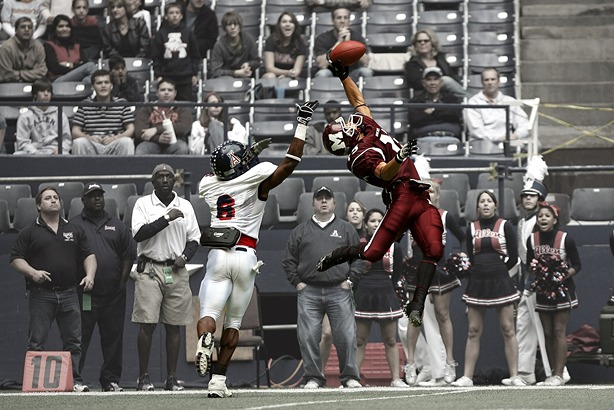
Safety Positions in Football
Written By: Gridiron Elite Training

Safety Positions in Football
Written By: Gridiron Elite Training
Football is a sport that combines power, speed, and agility. At the heart of the game lies a set of positions, each with its own unique responsibilities. Among the most critical of these positions are the safeties, whose roles are crucial for a team’s defensive success.
Beginners often misunderstand the safety position in football, but it’s a vital part of any winning strategy. In this post, we’ll explore the ins and outs of safety positions in football, including their duties, physical requirements, and how to excel as a safety on the field.
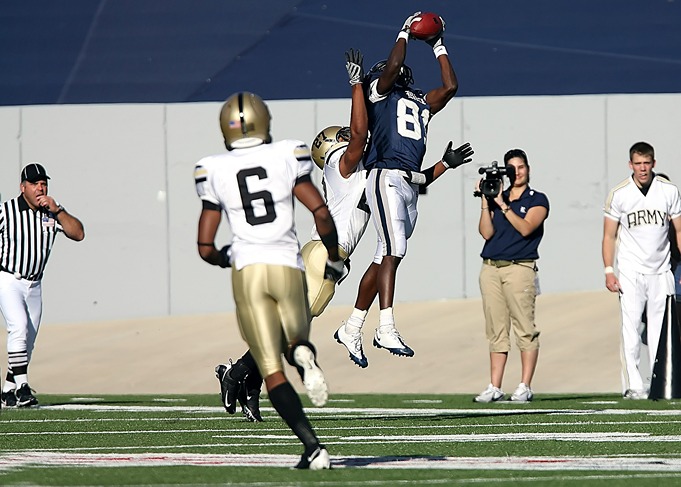
Understanding Safety Positions in Football
The safety position in football is a defensive backfield role that provides deep coverage and support in passing situations. There are two primary safety positions in football: free safety (FS) and strong safety (SS). These players are positioned deep in the backfield, behind the cornerbacks and linebackers, and act as the last line of defense against the offense.
Free Safety (FS)
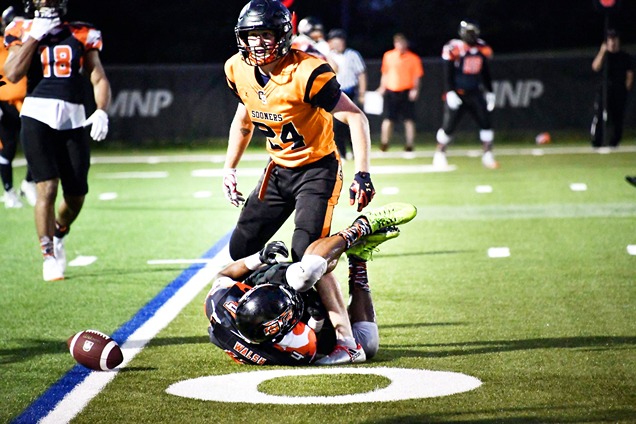
The free safety is typically the center-fielder of the defense. This player is responsible for reading the quarterback’s eyes, anticipating the play, and covering the deep middle part of the field. The free safety must be a fast, agile player with excellent instincts and ball-hawking skills. The primary responsibilities of free safety include:
- Providing deep coverage in passing situations
- Defending against deep passes and big plays
- Reading the quarterback’s eyes and reacting accordingly
- Assisting in run support when necessary
- Communicating with teammates and coordinating defensive adjustments
Strong Safety (SS)

The strong safety is a hybrid between a linebacker and a defensive back, often lining up closer to the line of scrimmage. This player is responsible for providing run support, covering tight ends and running backs in the passing game, and blitzing the quarterback when called upon. The strong safety must be a physical, hard-hitting player with good tackling skills and the ability to cover short-to-intermediate routes. The primary responsibilities of strong safety include:
- Providing run support and defending against the run
- Covering tight ends and running backs in the passing game
- Blitzing the quarterback when necessary
- Assisting in deep coverage in certain situations
- Communicating with teammates and coordinating defensive adjustments
Physical Requirements and Skills for The Safety Position In Football
To excel at the safety position in football, a player must possess a unique combination of physical attributes and skills. Some of these include:
- Speed: Safeties must be fast enough to cover large portions of the field and keep up with speedy wide receivers and tight ends.
- Agility: Quick change of direction and fluid movement are essential for safeties, as they often need to react quickly to the quarterback’s decisions.
- Instincts: Safeties must have a natural ability to read plays, anticipate the quarterback’s intentions, and make split-second decisions.
- Ball skills: Safeties must have excellent hands and be able to intercept passes, break up passes, or force fumbles.
- Tackling: Safeties must be sound tacklers, as they are often the last line of defense against the run and must prevent big plays in the passing game.
- Communication: As the “quarterbacks” of the defense, safeties must effectively communicate with their teammates and coordinate defensive adjustments.
How to Excel as a Safety
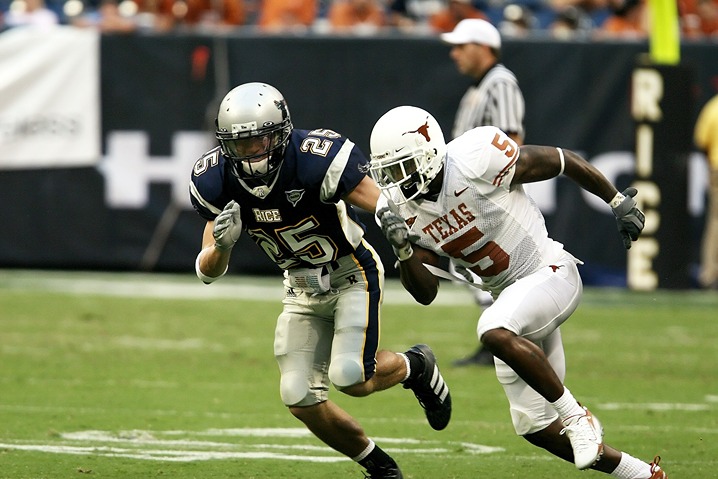
To excel as a safety in football, a player must work diligently to improve their skills and knowledge of the game. Here are some tips for becoming an exceptional safety:
- Study film: Watch game footage to learn from other successful safeties and analyze your own performance to identify areas for improvement.
- Work on fundamentals: Master the basics of footwork, tackling, and ball skills through dedicated practice and drills.
- Develop a deep understanding of the game: Learn offensive and defensive schemes, as well as the tendencies of opposing teams and players. This knowledge will help you anticipate plays and make quicker decisions on the field.
- Emphasize physical conditioning: Focus on building speed, strength, and agility through a dedicated training program tailored to the demands of the safety position.
- Be a team player: Develop strong communication skills and work closely with your teammates to ensure a cohesive defensive unit. Be prepared to take on a leadership role, as safeties often act as the on-field generals of the defense.
- Stay disciplined: Maintain proper positioning and avoid taking unnecessary risks that could lead to big plays for the opposing team. Trust your instincts and the game plan, and stay focused on your responsibilities.
- Learn from your mistakes: Reflect on your performance after each game or practice, and identify areas where you can improve. Continually strive for growth and development as a player.
- Be versatile: A great safety should be able to perform well in both run support and pass coverage. Work on improving both aspects of your game to become a well-rounded, dynamic player.
- Train your mind: Develop mental toughness and resilience by learning how to handle pressure and adversity on the field. A strong mindset is just as important as physical prowess in football.
- Seek guidance from coaches and experienced players: Learn from those who have played the safety position at a high level, and take their advice to heart. Be open to constructive criticism and always strive to improve.
Important Takeaways For Playing The Safety Position
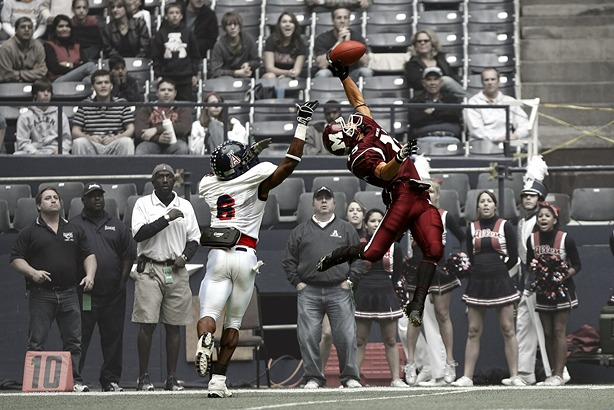
The safety positions in football are vital for a successful defense, and mastering these roles requires dedication, hard work, and a deep understanding of the game.
By following the tips outlined in this guide, aspiring safeties can develop the skills and knowledge necessary to excel in the field and become key contributors to their team’s success. As you continue to grow and develop as a player, remember that the journey to becoming a great safety is a marathon, not a sprint.
Stay focused, committed, and hungry for improvement, and you’ll find yourself making game-changing plays and helping your team secure victory.
Subscribe To Get Updates On Newly Released Articles
Don't forget to share this post!
Continue Reading More Football Recruiting Tips Below
Related Articles

5 Keys to the College Football Recruiting Process
If you are a high school football player, it’s easy to get lost in the college football recruiting process. This article will break down key stages of the recruiting process.
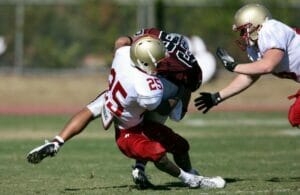
Junior College Football Recruiting
If you’re thinking about playing college football, read this article for quick tips on the process of juco college football recruiting.

Complete Guide to Football Recruiting Rankings
Find out why football recruiting rankings are important, where they come from, what they mean and how they affect your recruiting strategy.

Gridiron Elite Training was started to help educate and provide football players with a community to receive proper training and guidance.
We created “The Gridiron Elite Academy” which is an online football performance network that provides football players of all levels with sports performance workout programs, football position-specific drills, mindset coaching, mental toughness training, recruiting guidance and help, and nutrition programs.


